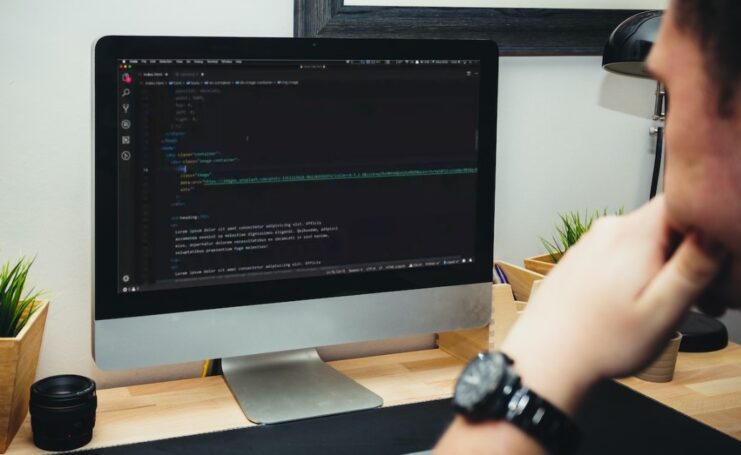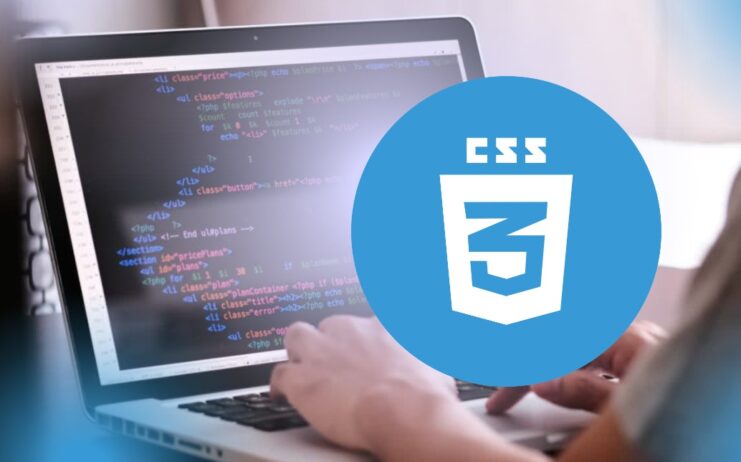In CSS, certain properties such as position, float, display, and z-index do not cause a layout recalculation when changed. This means that modifying these properties does not require the browser to reposition elements on the page.
This can significantly enhance performance, especially for pages that are intricate or sizable.
What Causes Layout Recalculate Style?
A website’s styles may need to be recalculated for various reasons. For instance, changes to the website’s layout such as adding a new sidebar can cause existing elements’ styles to change, necessitating some recalculation to ensure correct display. Resizing the browser’s window can also affect element display and prompt style recalculation. In some instances, simply scrolling through a page can also trigger style recalculation to guarantee proper content display.
Inline CSS
Can be utilized to load CSS within a website’s HTML. However, this method can impact performance negatively. To boost performance, a CSS block is loaded for rendering by taking specific steps. DOM measurement occurs after a DOM mutation. When a force is interrupted, a forced reflow occurs, and the later stage of layout in Javascript is entered. Nothing is repainted or reflowed upon display if it is hidden.
FastDOM
is an object-oriented library that enables the automatic separation of reading and writing from and to the DOM. While inline styles may serve a purpose, they are not the most effective way to maintain website up-to-dateness. Torus Kit employs this strategy to attain fast element bounds while avoiding unnecessary reflows.
Use CSS Triggers To Avoid Recalculate Style
If you want to reduce the amount of recalculate style, use properties that have a low impact on rendering performance. In addition, you can learn which CSS properties trigger layout, paint, and composite with CSS Triggers. As a result of these properties, rendering performance is worst in these cases.
What Causes Reflow CSS?

CSS reflow can occur due to several reasons, including:
- Outdated or poorly written CSS stylesheets make it harder for the browser to render the page correctly.
- Invalid or improperly formatted HTML code, which also requires more effort from the browser to render the page.
- Low-resolution browser settings result in smaller-sized page rendering, necessitating more work for the browser to scale up the page to the correct size.
- Slow or resource-limited computers cause the browser to take longer to render the page.
- Slow internet connections increase download and rendering times, making the browser work harder.
In addition, resizing the browser window using JavaScript, adding or removing elements from a DOM, or changing a class can also trigger reflow. Drag-and-drop operations reduce graphics input, requiring the browser to resume evaluation with GetBoundingClientRect() and resulting in data reflow. However, using IntersectionObserver to run the script eliminates reflows and eliminates the need for changes. CSS properties can affect render performance in terms of layout, paint, and composite rendering.
The behavior of resizing a browser window using JavaScript methods, adding or removing elements from a DOM, and changing a class can all cause reflow. A typical browser’s drag-and-drop operation reduces the amount of graphics input. Because it necessitates the reflow of data, the browser attempts to resume evaluation with GetBoundingClientRect(). If you run the script using IntersectionObserver, no reflows are encountered and no changes are required. The properties of CSS affect the performance of render layout, paint, and composite rendering.
Reflow: How To Make Your Web Page Responsive
When creating a website, it is important to ensure that it can be viewed and used on various screen sizes and devices. This process involves rerendering the web page to fit the different screen sizes and device types.
One way to achieve this is through responsive design, which allows the content to adjust and zoom for different screen sizes while retaining its information and functionality.
Ideally, the content should not require two-dimensional scrolling unless it is necessary for specific parts that require two-dimensional functionality.
Does Translate Cause Reflow?
When a flow occurs, it may cause a change in the layout of a whole or part of a page, leading to the recalculated size and position of the affected elements and preventing animations. Reflow does not cause any changes to the translation, rotation, or scaling of the page.
Oral Translation: The Most Difficult Type Of Translation

Oral translation is often considered the most challenging form of translation as it requires the translator to have a deep understanding of both the source and target languages, as well as the cultures associated with them.
Additionally, the translator must be able to convey the same message accurately and fluently in both languages. This can be especially difficult in certain cultures where written records may be limited or unavailable, making it harder to verify or confirm translations.
Why Adding Some CSS To An Element Might Cause Reflow To Happen?
Adding CSS to an element may cause a reflow to happen because it changes the layout of the element and potentially affects the position of other elements on the page. When the browser calculates the position and size of the element with the new CSS, it may need to recalculate the positions of other elements as well.
This process of recalculating the layout of the page is known as reflow and can be time-consuming, especially for complex pages.
Therefore, it is important to use CSS properties that have minimal impact on rendering performance to minimize the risk of causing a reflow and repaint.
What Triggers A Repaint?
A repaint is triggered when a widget needs to be redrawn, either due to invalidation or changes in its size, position, or appearance.
In the past, websites displayed only text, tables, and images. However, modern browsers allow us to inspect our code and understand what we are doing. When users enter a URL, the HTML source code is delivered to the browser, which then converts tokens like the head and body into nodes. The browser must learn how to display and style these nodes, which can result in reflow or repaint.
Typing or changing the font size in an input box can affect repaint and reflow. However, modern browsers can create a queue of changes and perform them in stages. Applying a class instead of changing multiple CSS styles can help manage a RenderTree with more reflow capacity. Using absolute or fixed positioning on changing elements in CSS can also help avoid reflow and repaint.
The inspector can display a timeline of reflow and repaint events, which can help identify performance issues. Instead of using the paint() method, the more specific repaint() method can be used to update only the necessary parts of a component.
In Java swing, the paint() and repaint() methods are essential for specifying how a component will be painted. The paint() method contains instructions for painting a specific component, while the repaint() method updates the repainted component.
The Different Types Of Changes That Can Affect An Element’s Layout

Modifying the skin of an element can usually be seen by the user, but even changes that aren’t visible, like altering the outline, visibility, background, or color, can impact the element’s layout. Additionally, resizing the browser window or modifying element classes can also trigger a reflow, which affects layout.
By taking advantage of this knowledge, I was able to improve my workplace application’s performance by 75%.
Layout Recalculation CSS
Layout recalculation is the process of determining the positions and sizes of elements in a web page. This is usually done by the browser, but can also be done by JavaScript. Layout recalculation is necessary when the size of an element or the page itself changes.
When the DOM is changed, a reflow is only triggered once the DOM has been set. A repaint is when a section of an element’s skin is visibly rearranged, but its layout remains unchanged. To ensure that all other nodes in the DOM tree are visible, Opera recommends repainting the page several times. What are the benefits of browser reflow? When a browser must draw and process a large portion of a webpage again, reflow refers to it. What causes re repainting on car windows? A piece of clothing’s color and visibility changes, and the skin changes only as a result.
Change CSS3 Transform
CSS3’s Transform is a powerful feature that enables you to modify an element’s appearance, size, shape, and behavior. With Transform, you can rotate an element, move it to a different location, or visually alter it by skewing, rotating, translating, or scaling it.
To achieve a skew effect, both skewX and skewY can be used, along with rotateX, rotateY, and rotateZ. The transform property accepts a list of values that are executed in a specific order, with the element’s scaling performed last. Additionally, the matrix transform function allows you to combine multiple matrix transforms into a single result.
FAQs
How Do You Transform Elements In CSS?
To transform elements in CSS, you can use the transform property along with various functions such as rotate(), translate(), scale(), and skew().
Here are some examples of how to transform elements in CSS:
- Rotate an element 45 degrees:
transform: rotate(45deg);
- Translate an element 50 pixels to the right and 20 pixels down:
transform: translate(50px, 20px);
- Scale an element to be twice its original size:
transform: scale(2);
- Skew an element horizontally by 20 degrees:
transform: skewX(20deg);
- Combine multiple transformations:
transform: rotate(45deg) translate(50px, 20px) scale(2);
This rotates the element 45 degrees, moves it 50 pixels to the right and 20 pixels down, and doubles its size.
What Is CSS Transform In Html?
In HTML and CSS, the ‘transform’ property is used to modify the appearance and behavior of an element. It is a CSS3 property that allows you to visually transform an element by changing its size, position, or orientation. The transform property works by applying a set of mathematical functions to an element, such as rotate(), translate(), scale(), and skew().
By using the ‘transform’ property, you can create a wide range of visual effects in HTML and CSS. For example, you can rotate an element, move it to a different location, change its size, or skew it. The ‘transform’ property also allows you to combine multiple transformations together to create more complex effects.
Overall, the transform property is a powerful tool in HTML and CSS that allows you to modify the appearance and behavior of an element in a variety of ways.
Why Do We Translate Transform In CSS?
In CSS, the translate() function is used as part of the transform property to move an element horizontally and/or vertically on the screen. We use the translate() function in CSS transform for several reasons:
- Positioning: ‘translate()’ allows you to position an element precisely where you want it on the screen, even if the element’s position is originally static or relative. This can be useful when you want to create a specific layout or when you need to move an element in response to user interaction.
- Animations: ‘translate()’ can be used to create animations by moving an element from one position to another over time. For example, you can use translate() to create a slide-in animation for a sidebar or menu.
- Performance: ‘translate()’ is often more performant than using absolute positioning or margins to move an element. This is because translate() is optimized for hardware acceleration and can be animated using the GPU, resulting in smoother animations and better performance.
Overall, the translate() function is a powerful tool in CSS transform that allows you to move and position elements on the screen with precision, create animations, and improve performance.
CSS Translate Function Moves Text?
In CSS, the translate() function is used to move an element, including text, horizontally and/or vertically on the screen. When translate() is applied to text, it appears to move as a block, retaining its original shape and font properties. The movement of the text can be smooth or abrupt, depending on the duration and timing function of the animation or transition applied to the translate() function.
For example, if you wanted to move a paragraph of text 50 pixels to the right, you could use the following CSS code:
p {
transform: translateX(50px);
}This would move the entire paragraph 50 pixels to the right, preserving its original font properties, such as font size, color, and weight.
Similarly, you could move the text vertically by using the translateY() function, or move it diagonally by using both translateX() and translateY() together.
Overall, the translate() function is a useful tool in CSS for moving text and other elements on the screen, allowing for precise positioning and animation.
How Do I Change My Origin CSS?
In CSS, you can change the ‘transform-origin’ of an element using the ‘transform-origin’ property. The transform-origin determines the point around which an element is rotated or scaled when a transform function is applied.
Here’s how to change the ‘transform-origin’ of an element in CSS:
- Choose the new ‘transform origin’: The ‘transform origin’ is defined by its x and y coordinates, which are expressed as percentages or length values. For example, transform-origin: 50% 50%; sets the origin to the center of the element.
- Apply the transform-origin property: To change the ‘transform origin’, simply add the transform-origin property to the CSS for your element and specify the new coordinates. For example, to set the ‘transform origin’ to the top left corner of the element, you would use the following code:
.my-element {
transform-origin: 0 0;
}
This sets the ‘transform-origin’ to the upper left corner of the element.
You can also use the ‘transform-origin’ property with different units, such as pixels or ems, to specify a specific distance from the edge of the element.
Overall, changing the ‘transform-origin’ of an element in CSS is a simple way to control how it is transformed with transform functions like rotate(), scale(), and skew().
The Different Types Of CSS?
CSS (Cascading Style Sheets) is a language used to style and layout HTML (Hypertext Markup Language) web pages. There are different types of CSS that are commonly used, including:
- Inline CSS: This involves adding CSS styles directly to an HTML element, using the
styleattribute. Inline CSS styles only affect the specific element they are applied to. - Internal CSS: This involves adding CSS styles to an HTML document, using the
styletag within theheadsection. Internal CSS styles apply to all elements within the HTML document. - External CSS: This involves creating a separate CSS file with all the styles and linking it to the HTML document using the
linktag. External CSS styles can be reused across multiple HTML pages, making it easier to maintain a consistent design across a website. - CSS frameworks: These are pre-written CSS code libraries that provide a set of pre-defined styles and layouts for web development. Popular CSS frameworks include Bootstrap, Foundation, and Bulma.
- CSS preprocessors: These are scripting languages that extend the functionality of CSS by allowing developers to use variables, functions, and other programming concepts in their CSS code. Popular CSS preprocessors include Sass, Less, and Stylus.

